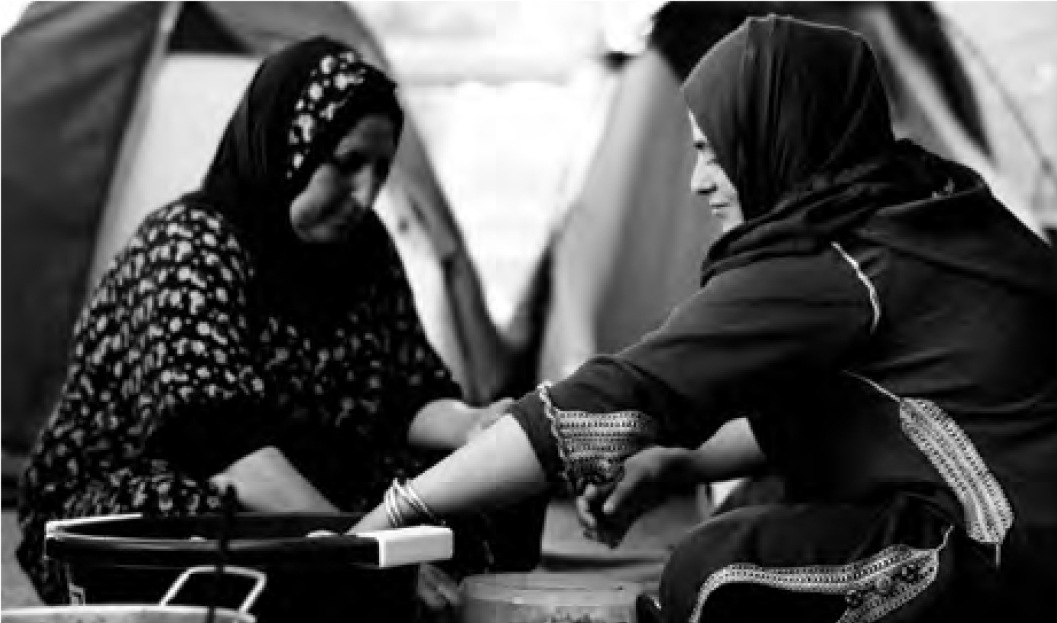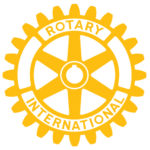By Federica Marsi
When the banks say “no,” micro-finance may be the only way out of poverty and the key to unleashing untapped human capital.

Far from being a simple lack of resources, poverty is a multi-dimensional condition of social and economic deprivation that imprisons individuals within the limits of their financial capabilities. The poor often lack the tools to break free from their condition and unleash their human potential. Even access to wealth in the form of financial loans is a prerogative of those who already dispose of capital. Financial services providers (FSP) apply strict eligibility requirements in order to limit the risk of default. Nearly three billion people in developing countries are currently excluded from the formal financial system.
In Lebanon, following the inflow of refugees fleeing the Syrian war the number of people living under the poverty line has risen by 66 percent since 2011. According to the World Bank’s estimates, an extra 170,000 Lebanese became poor between 2011 and 2014. Among the more than one million Syrian refugees present in the country, approximately 350,000 are estimated to be unable to meet minimum survival requirements.
At a time where 1.6 billion people around the world still live in poverty and humanitarian coffers are increasingly going bankrupt, the need for new solutions has become evident. Over the past 15 years, microfinance has built a solid track record as a critical tool in the fight against poverty, granting loans to approximately 130 million low-income individuals. Can this be a successful recipe in Lebanon, both for its local and refugee populations?
In Lebanon, the number of microloan providers has passed 20, with the top five microfinance institutions (MFIs) having a combined worth of $62 million. Al Majmoua, the largest such provider according to publicly available data, was created in 1994 as a microfinance program by Save the Children and then spun off as a fully-fledged non-governmental organization (NGO). Currently, it offers individual and group loans to 60,000 users.
Although it serves some of the most underprivileged individuals in Lebanon, al Majmoua’s default rate is below one percent. Its lending methods have been crafted to serve the specific needs of the targeted population.
“We spend a lot of time with each client, making sure not to over-indebt them,” says Alia Farhat, al Majmoua’s business development manager. “We also offer them non-financial services, including financial education and technical skills training to make sure their business is well managed.”
The majority of al Majmoua’s loans are issued to individuals, with others issued through groups consisting of three to five members each. These are smaller than individual loans (on average $400-500 per person versus $1,000-1,500) and are designed for borrowers who lack a credit history and therefore need joint liability lending.
Around 15 percent of al Majmoua’s clients are non-Lebanese, including Syrians, Palestinians and other minority groups. While many financial service providers are reluctant to work with refugee populations — considered unreliable due to their transient nature — the NGO is bucking the trend.
“Refugees are a resource, but we lack a national strategy that can unleash their potential,” says Farhat. Of the 450 group loans granted to Syrian refugees in Lebanon, only six have not been repaid. Since February, al Majmoua also granted 28 individual loans, all of which are being repaid on time. However, including refugees in microfinance programs is a delicate procedure that can cause an earthquake on already shaky grounds. “We need
to be very careful not to create direct competition between Syrians and the local community,” says Farhat. “Therefore we must create businesses that tap into a niche market.” Financed activities include bakeries selling Syrian manoushi bread, which is slightly less salty than its Lebanese version, and woodcarving, among others.
Other providers have attempted to serve refugee populations, with limited success — partly because the products and services offered were not adapted to the specific needs of the clients. To provide guidance on the topic, the United Nations High Commissioner for Refugees (UNHCR) released in July 2016 a report with detailed guidelines on how to successfully serve refugee populations.
“The Lebanese host communities have realized that it is also in their interest if refugees have income-generating activities,” says Farhat.
“However, our ability to help the Syrian community is limited by our ability to identify new value chains that will not affect Lebanese businesses.”
Mahmoud Araissi, assistant professor at LAU’s Adnan Kassar School of Business specializing in the banking sector, agrees. “Refugees currently constitute a lost potential for Lebanon,” he says, “when they could be integrated in the market and generate revenues as is happening in other host countries.”
— Alia Farhat, business development manager at al Majmoua
Rather than encouraging refugees to resettle permanently, investing in human capital could prove a more effective long-term strategy. “Lebanon has always witnessed economic immigration from Syria, therefore giving them the tools
to reinvest in their own country would enable them to create a better economy,” says Araissi.
But funding a loan always involves a risk for the lender — even more so if the beneficiary has no credit history, proof of residence, or bank account. MFIs can limit their default risk by assessing the credit capacity of clients and other factors such as natural risks. Taking it a step further, new microfinance models are emerging that may allow for the development of courageous projects that do not directly translate into a business initiative, such as green loans and support for education.
“Some individuals may not be able, for example, to pay their children’s school fees upfront, but they are able to cover that sum if they can pay over a period of time,” says Lev Plaves, Middle East portfolio manager for Kiva, an international nonprofit that developed the world’s first online lending platform. Through its website, Kiva allows users to lend money to low-income entrepreneurs and students in over 80 countries. Its local partners identify suitable beneficiaries, whose pictures are posted on the Kiva platform along with a description of what the loan will be used for. Each lender chooses whom to support and allocates a $25 loan.
“Kiva takes the responsibility for the loan upon itself, enabling its local partners to do things they would otherwise not have done,” says Plaves. As the loan’s total amount is spread among many lenders, losses in case of default are very limited. Kiva’s default rate is only three percent. In Lebanon, Kiva is partnering with al Majmoua, which is responsible for verifying the eligibility of each beneficiary. Loans are then granted to local MFIs without interest when the sum required by the beneficiary is raised. Once the loan is paid back, each lender receives $25 back and can decide whether to reinvest the sum to help another borrower.
“We like the idea of strangers helping one another,” says Plaves, “and this solidarity chain has reached mind-blowing proportions.” Among Kiva’s beneficiaries, he recollects one woman from northern Iraq whom Kiva helped start a sewing business. “When she saw the pictures on the website of the users who helped her start her business,” Plaves recalls, “she was so touched that she too decided to lend money to someone else.”
But what is the future for microfinance in the Middle East? Access to finance via deposit accounts, payments and credit has proved to reduce poverty and enable the poor to build assets, increase incomes, and reduce their vulnerability to economic stress. While MFIs can operate as a “non-profit” institution such as NGO, credit cooperative, non-bank financial institution (NBFI) or even as a formal, regulated and “for-profit” bank, microfinance institutions are commercially driven which ensures business suitability.
While the microfinance sector still holds great business opportunities for investors in the Middle East and North Africa region, external risks are currently the highest risk category in the Arab region, with Syria, Lebanon and Tunisia ranking among the countries where the risk perceived by stakeholders is “high” or “very high.”
According to Marcel Rached, investment officer with the International Financial Corporation (IFC) and LAU business graduate (’98), perceived risks do not always reflect the reality on the ground. “Lebanon’s potential to expand its microfinance sector is great, but of course this won’t happen if changes are not made to facilitate this process,” he says. IFC, a member of the World Bank Group, is the largest global development institution focused exclusively on the private sector in developing countries. As part of its mission, oriented toward strengthening private sector development where it is needed the most, the IFC advises governments on how to improve financial institutions.
“What Lebanon needs is an update in its regulatory environment,” says Rached, “starting with a dedicated microfinance regulatory framework.” Non-profit institutions providing microfinance services are registered with the Ministry of the Interior and do not have to follow the lending regulations incumbent upon financial institutions registered with Banque du Liban (BDL), Lebanon’s central bank. One of the main risks deriving from this is over-indebtedness among microentrepreneurs who might be taking out loans from multiple MFIs at the same time, the expert explains. “These NGOs should be regulated under a special microfinance regulation that enables information sharing.”
While investors may tend to stay clear of the Middle East due to its political instability, its microcredit recipients are not any riskier a gamble than others elsewhere in the world. With the need for financial inclusion stretching across the globe, strengthening the regulatory system is a first necessary step toward making the region a more fertile ground for financial services catered to its growing population of microentrepreneurs.
Source: LAUM
Learn more about:




Copyright © 2024 The Olive Tree SAL, all rights reserved. Terms of Use | Privacy Policy